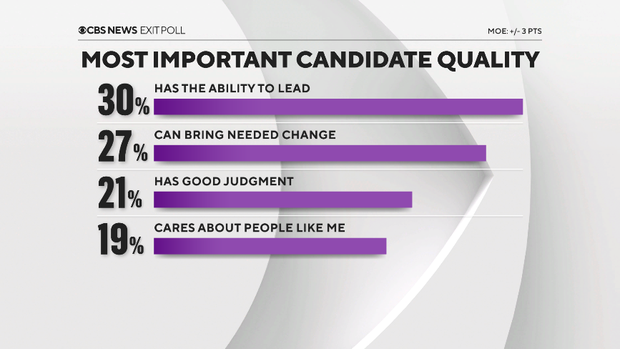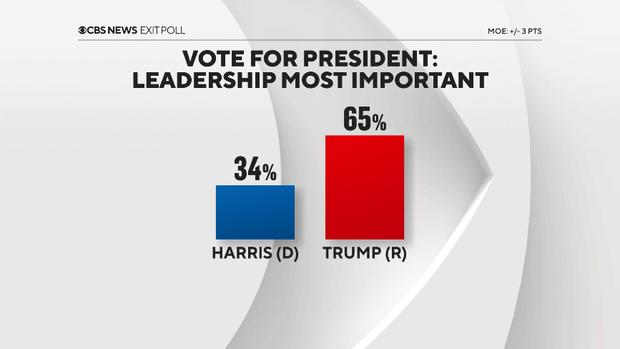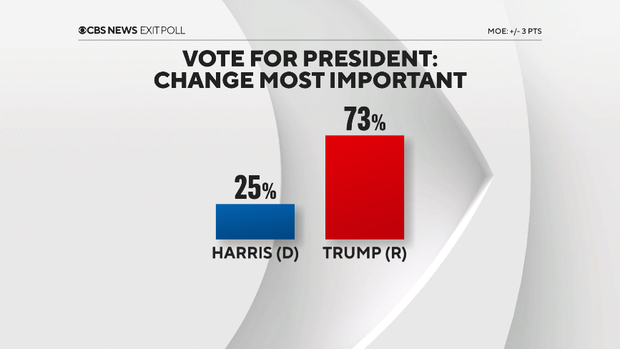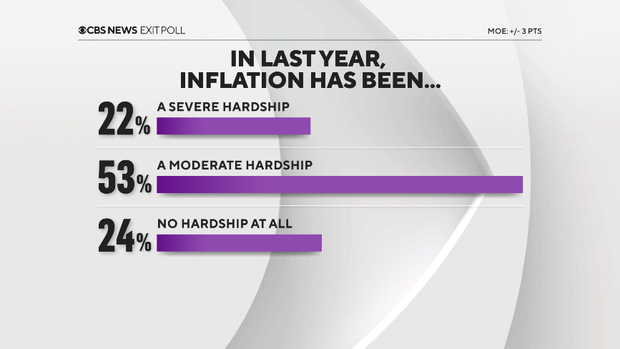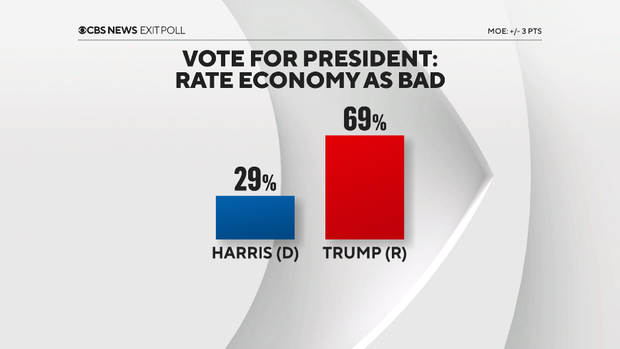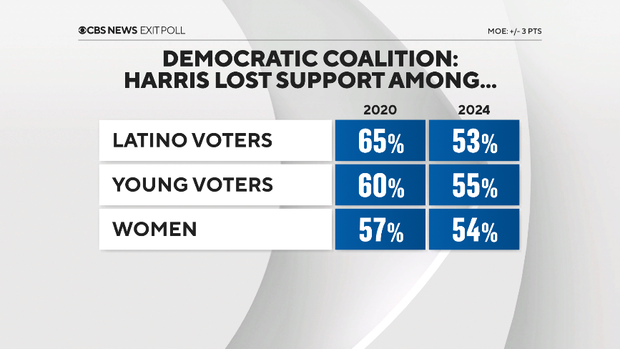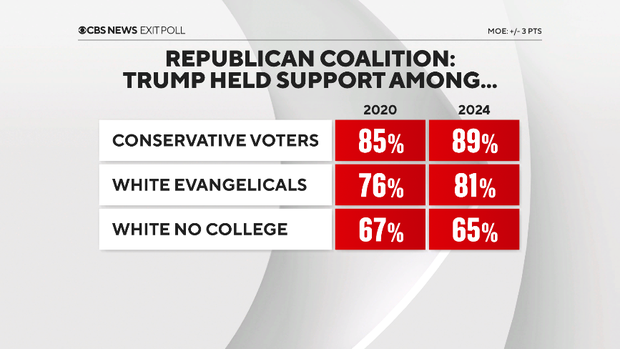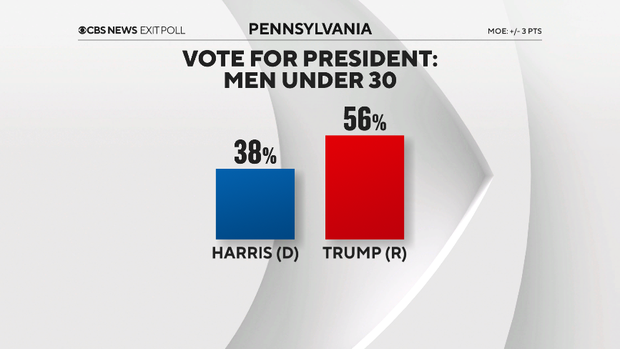Note: Exit poll percentages may have updated since this post.
The voters in the 2024 presidential election were looking for a leader and someone who could bring needed change, and for that change they looked back to former President Donald Trump.
He was propelled by an electorate dissatisfied with the state of the country, the economy and by the many voters who were feeling the impact of inflation.
Vice President Kamala Harris underperformed with key parts of the Democratic coalition, while Trump made some inroads. He also continued to excel with some groups who have historically backed him, keeping his coalition largely intact.
The ability to lead and to be someone who can bring needed change were the top two candidate qualities for voters — and Trump won them handily.
Two thirds of voters described the economy as bad, and those voters who did went big for Trump.
And on a personal level, more said they were worse off financially compared to four years ago — and 8 in 10 of those voters backed Trump.
Most said inflation was a hardship, including nearly a quarter who said the hardship was severe.
On issues, the state of democracy and the economy were the top concerns for voters. And while most voters said they wanted abortion to be legal, the issue did not rise to the top for voters.
Harris led Trump among those who said abortion should be legal, but Trump did capture 28% of those voters, indicating these voters’ position on the issue was not as salient when it came to their vote choice.
Voter groups
Harris lost some support among some traditional Democratic coalition groups, while Trump held much of his coalition together.
Trump also targeted marginal voters in his campaign and nationally, the voters who did not vote in the 2020 presidential election voted for him over Harris.
Trump made inroads with some parts of the Democratic coalition, including young voters, and particularly young men under age 30.
In particular, in Wisconsin and Pennsylvania — states where Mr. Biden won voters age 18-29 by double digits —Harris’ margins were far smaller.
In Pennsylvania, Trump did well with younger men, a group Mr. Biden won in this state by 9 points. Much of Harris’ less than robust performance with voters 18-29 was due to the fact that Trump performed better with younger men than he did in 2020.
Trump made gains with Latino voters both nationally and in some key battleground states. And nationally, more Latino men backed Trump over Harris, a reversal from four years ago when that group backed Mr. Biden. For Latino men, the economy was their top issue, and most said they were worse off financially compared to four years ago.
Harris won a majority of Black voters, but she didn’t do as well as Biden, particularly in some states with Black men. Trump got the support of about 1 in 5 Black men in North Carolina, more than doubling his support from 2020.
Independents swung more toward Trump. They backed him in Georgia, for example, where they went for Mr. Biden by 9 points.
Nationally, more voters thought Trump’s views were extreme than said that of Harris, but roughly 1 in 10 those voters backed him anyway.

